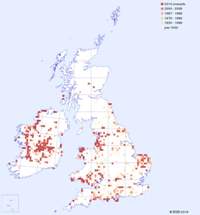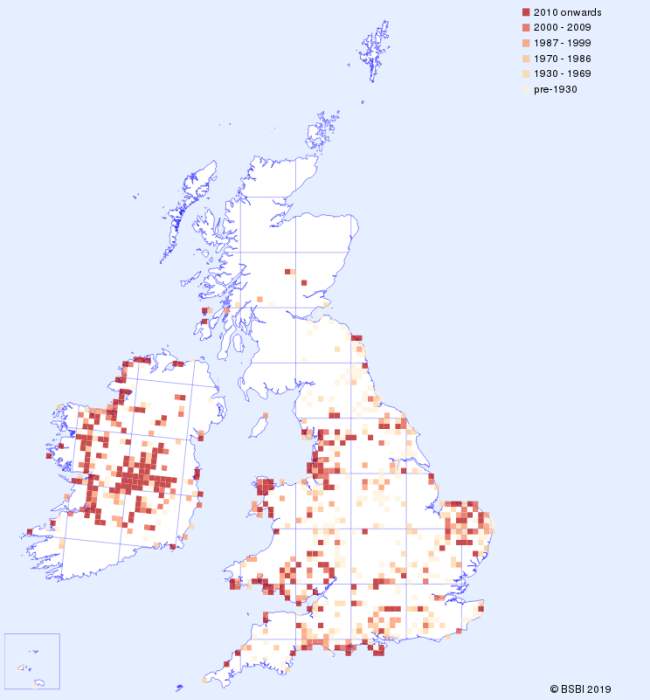Regarded by some as having the most beautiful flowers of all Britain's orchids, this species occurs widely in two colour varieties, pink-brown or cream-green, the latter being referred to as Epipactis palustris var. ochroleuca. The pink-brown flowers are the more common, but in many colonies the cream-green flowers appear in varying numbers. Epipactis palustris grows in neutral to alkaline damp or marshy habitats, particularly in fens and in sand-dune slacks where there is a very high level of ground water. Marsh Helleborine is widespread in England, Wales and Ireland, but it is rare in Scotland. The Marsh Helleborine's strongholds in England - in Hampshire and in Norfolk - appear to be weakening due to land drainage and habitat destruction; however, in some parts of Wales, especially in the coastal dune systems, in good years thousands of plants appear and carpet the ground. Marsh Helleborine flowers from late June to early August. On the European mainland this orchid occurs from Scandinavia in the north to as far south as Italy and Greece.
| Distribution Map | Key Features | |
 |
Records for the Marsh Helleborine from BSBI are shown on the map with most recent in front. (Hover the mouse over the small map to expand it.) |
Plant: 20 to 45cm tall, occasionally to 80cm; stem green, flushed pink-to-brown towards the ridged tip, and conspicuously hairy. |
Image Gallery for Marsh Helleborine Epipactis palustris
| Pollination | Taxonomy & Hybrids |
The Marsh Helleborine is pollinated by a range of insects, from bees to ants. Self pollination may also occur, and seed set is good. |
The specific name 'palustris' means 'marshy ground'. |
Articles about Marsh Helleborine in JHOS
